| Hawkridge - St Giles Coffin C13. from St Nicholas's Priory Exeter |
Heathfield - St John the Baptist Elizabethan 2 kneeling figures |
Henstridge - St Nicholas Wm Carent 1613 & Wife TC |
| Hardington - St Mary Col Warwick Bampfield 1692 Standing wall monument |
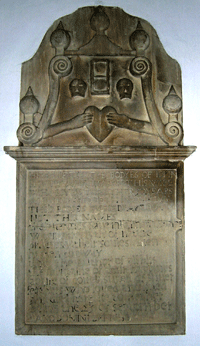 |
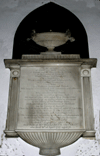 |
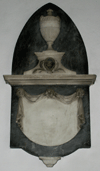 |
|
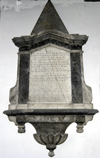 |
 |
|
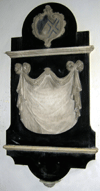 |
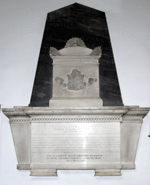 |
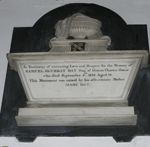 |
 |
|||
| John and Margaret Shutt | Top Samuel Day (1806) Bottom Sarah [Banicer] (1770) |
Top Illegible Bottom George Clarke Stmonds (1836]) |
Samuel Skurray Day (1816) | Top Walter Robinson (1737) Bottom Robert Painter (17[56]) |
John Painter (1809) by W Brewer |
 |
Hinton St George - St George |
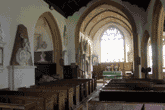 |
| Church open during normal hours. Park in the village. Information on the Poulett Family may be initially found here. O/S Ref: ST 418 127 |
| Chancel |
 |
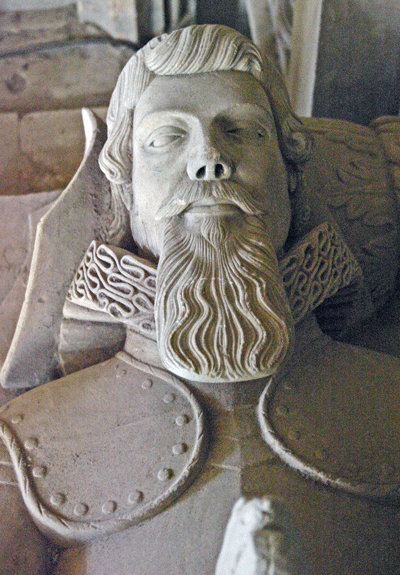 |
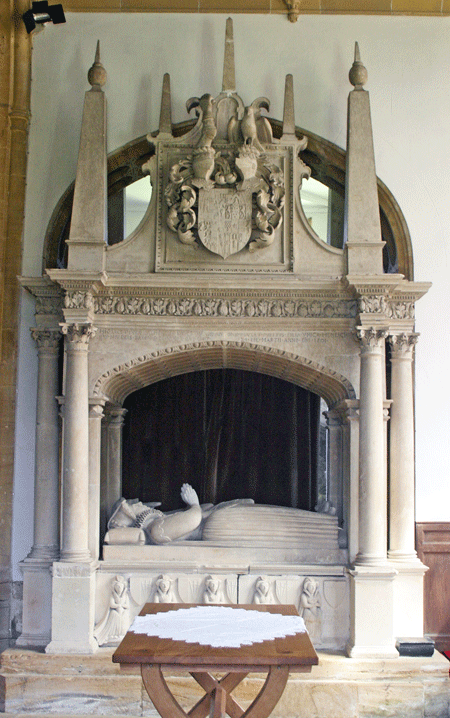 Sir Anthony Poulett (1600) and Catherine (Norris or Norreys) (1601) and Children |
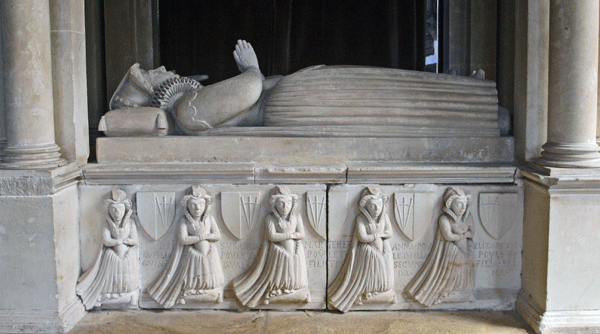 |
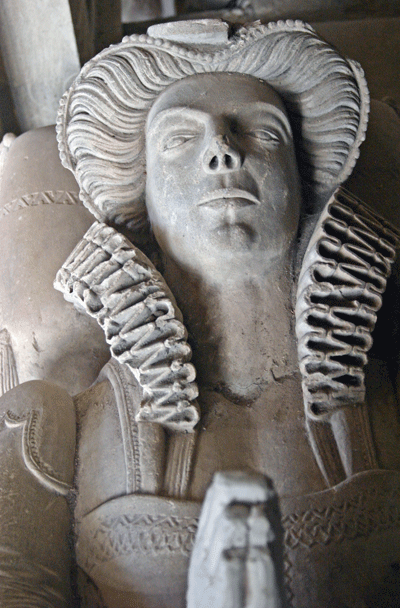 |
|
|
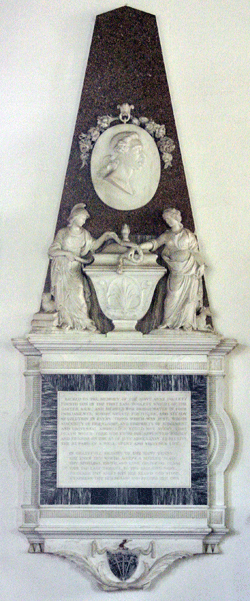
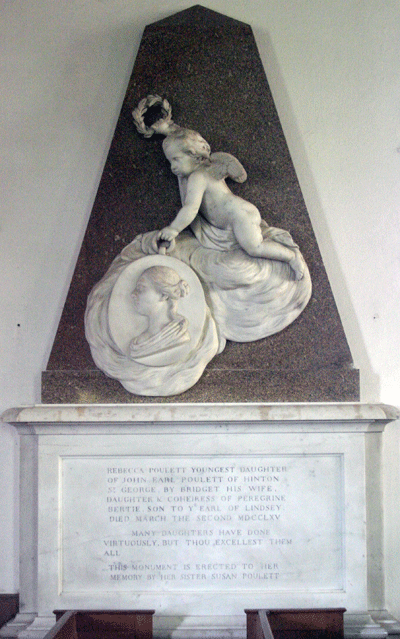 |
 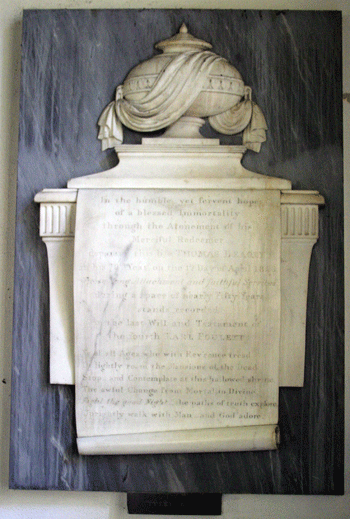 |
|
Above Left: Anne Poulett (1765) Above Right: Rebecca Poulett (1765) Far Right Top: Vice-Admiral Hon. George Poulett RN (1854) & his wife Catherine Sophia (1831) & their daughter Augusta Margaret (1836 age 16), & their sons: Captain George A., of HM 54th Reg (1850), Lt Henry Ashton V. Native Infantry of Bengal (1842) & John Powell (1829 in infancy) Far Right Bottom: Thomas Beagey (1826) |

 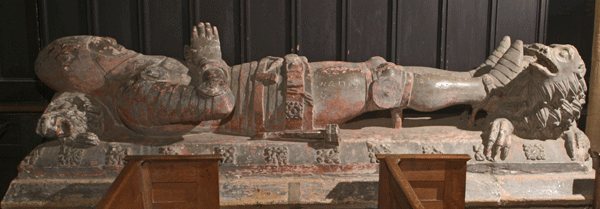 Above Top Left: John Thudderle & Wife (late 15th C.) Above Top Right: John, 4th Earl & Viscount, 8th Baron Poulett (1819) Above Bottom: Knight c. 1475 Note the two belts |
| North Aisle |
 |
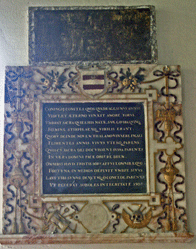 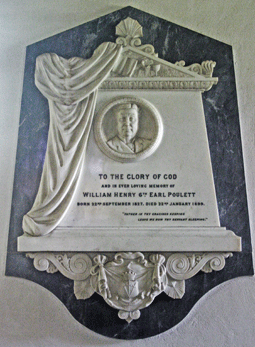 |
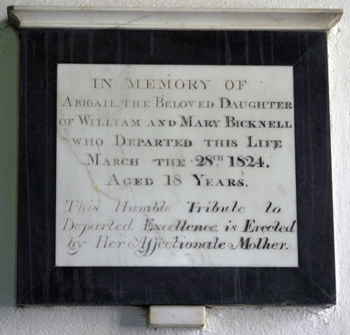 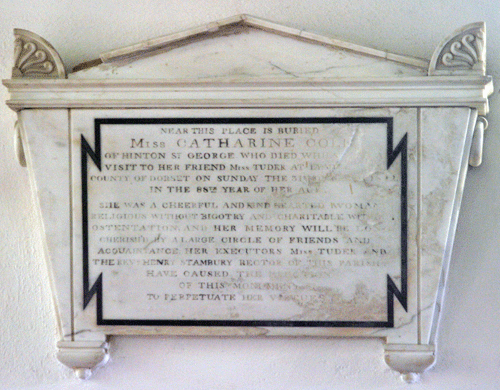 |
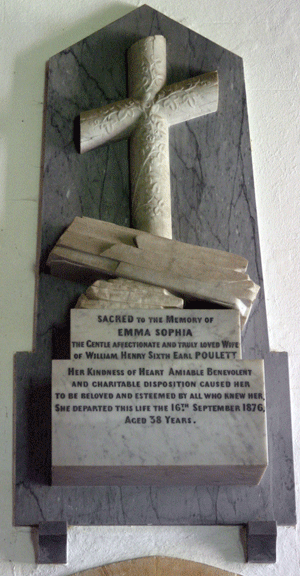 |
| Above: Illegible Right Top: The epitaph is in Latin but gives no name; this was presumably on the damaged top section. Right Bottom: William H. 6th Earl Poulett (1899) |
Above: Emma Sophia (1876)
,
wife of William, 6th Earl Poulett Left Top: Abigail Bicknell (1824) She died aged 18 Left Bottom: Catharine Cole (1822) |
| Poulet Aisle |
| This aisle contains a number of wall monuments to the Poulett family but was closed off from the body of the church by a locked, low barrier; however it was possible to take photographs over the barrier, although not always from a satisfactory angle. I understand - but I do not know if this is correct - that this aisle is now accessible. |
 Above: Bridgett Poulett (1747) Right Bottom: Vere Earl Poulett (1819) by Sir R. Westmacott |
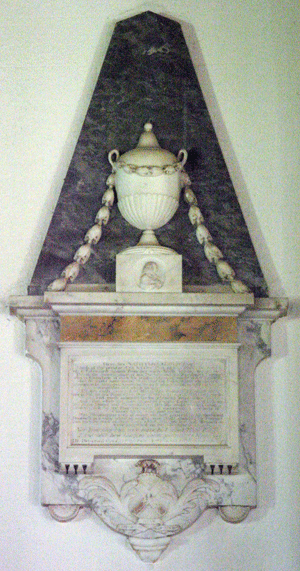 |
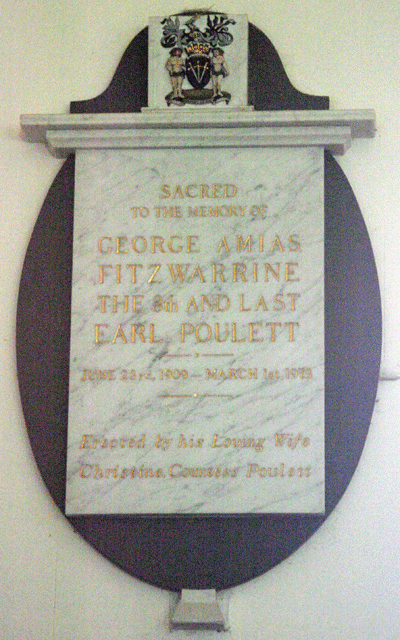 |
 Above: John, 1st Earl Poulett (1744) By Rysbrack Left Top Left: I was unable to read the inscription on this monument Left Top Right: George Amias Fitzwarrine, 8th & Last Earl Poulett (1973) |
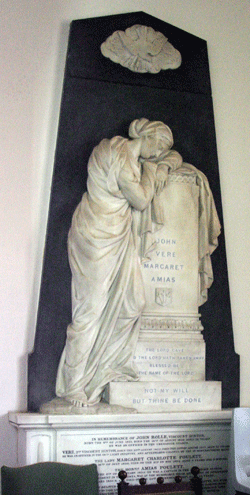 Above: John Vere M. Amias Poulett (1857) By E. J. Physick of London |
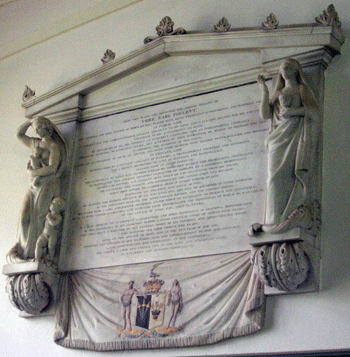 |
||||
| Poulett Chapel |
| This chapel, which contains a number of the most interesting of the Poulett monuments, is entered by a locked door from the Poulett Aisle, itself originally (and possibly still) closed by a locked barrier, as mentioned above, and thus was neither accessible nor visible. There was also a curtained archway at the north aspect of the double tomb in the chancel, as may be seen in the photograph above. I understand that the chapel is still locked but the curtain has now been replaced by a glass window and the door from the Poulett aisle now also has a viewing window so the monuments, which were restored some time after my visit, can now been seen. |
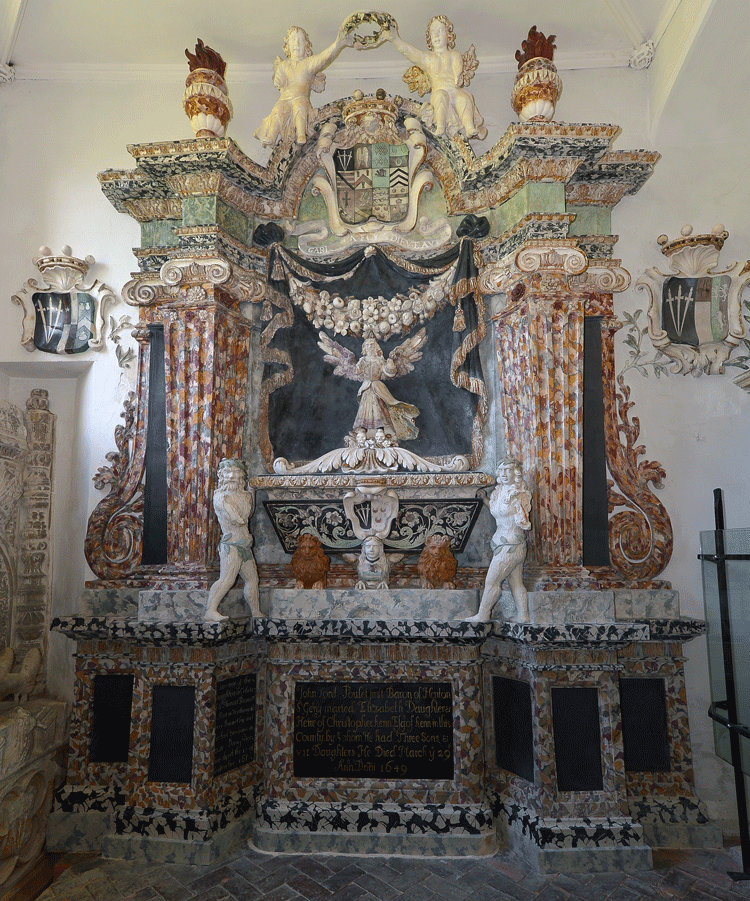 |
 |
| John, 1st
Baron Poulett (1558-1649) and his son, John,
2nd Baron Poulett (1615-1665) A scagliola (see
below) monument which, on restoration was found to be the
earliest in England. Probably by Baldassare Artima
and possibly Iancinto Corsi, Italian scagliola
makers, and dated 1667 - 1669. They were both prominent Royalists, the father having his own cavalry regiment although a terrible soldier. The latter was enoubled by Charles I. The son escaped to Europe during the Commonwealth and returned at the Restoration. |
Above & Below:
Sir Amyas Poulett II
(1588) Alabaster effigy; the inscription on the
tomb chest is in French. He was for a time guardian of
Mary, Queen of Scots, who described him as 'one of the
most zealous and pitiless men I have ever known'. Brought here from St Martin-in-the-Fields, London in the 18th century. An almosy identical effigy can be found in Westminster Abbey to William Thynne, 1584. |
| Scagliola:
Italian for 'chips'. Made
to resemble stone from a mixture of a plaster variety of
gypsum or alabaster chips, glue and natural pigments. The
Structure is then painted and polished. A reference to this monuments was made in the Diary of Grand Prince Cosimo Medici II, Grand Duke of Tuscany and last of the Medici Dukes. Cosimo was on his extended Grand Tour and passed through Hinton in 1669, staying with Lord Poulett. The diary was written by the Duke's secretary, Lorenzo Magalotti, who explicitly describes the tomb. Furthermore, the arms on the right of the monument dipicts Poulett impaling Herbert for the marriage of 3rd Lord Poulet to Lady Susan Herbert, daughter of Philip Herbert, 5th Earl of Pembroke. This marriage took place 15th July 1667. So the monument was erected after the 2nd Lord's death in 1665 between 1667 -9 |
|
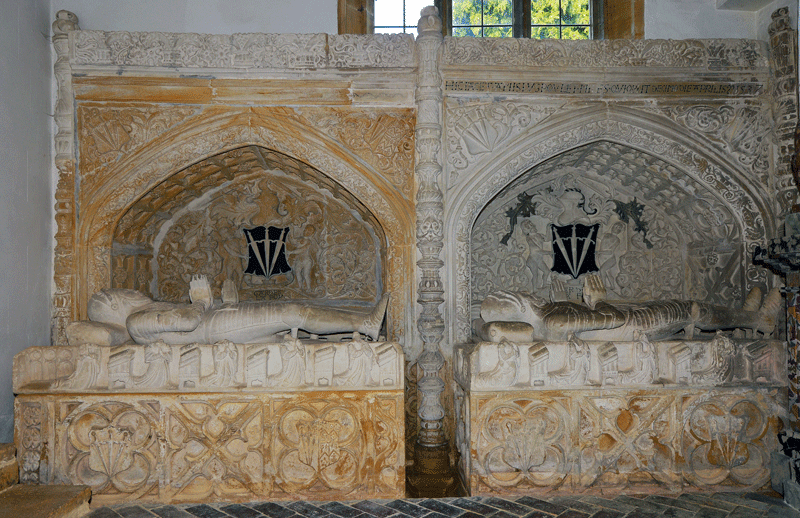 |
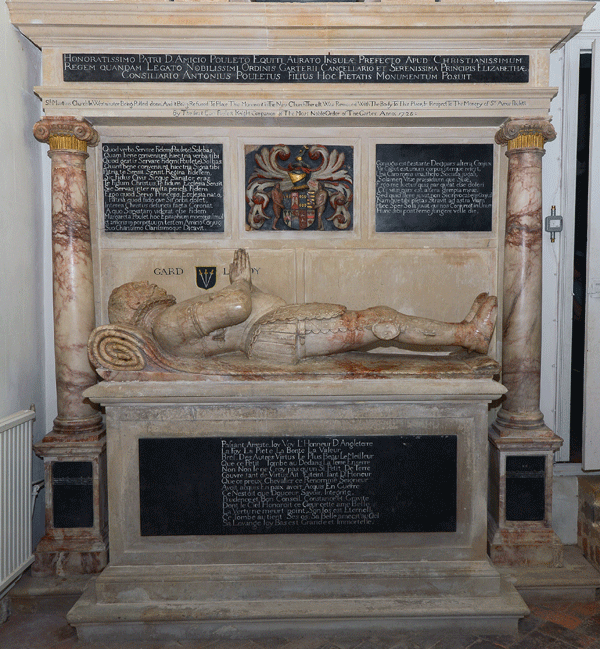 |
Left: Sir Amyas Poulett (1537) & Lora (Kellaway) (Second wife) and Right his son Sir Hugh Poulett (1572) and his wife Phillippa Pollard An almost identical pair. The tomb chests use old pieces from other monuments. Note the kneeling children along the top stage of the tomb chest. |
Above the lower stages of the above monument (upper photograph) may be seen a black sarcophagus situated between twin pilasters below a pediment. This is a monument to Bernard Hutchins (1733) who was a servant of the Pouletts was clearly held in high regard, being buried in the Poulett vault below the chapel. |
 |
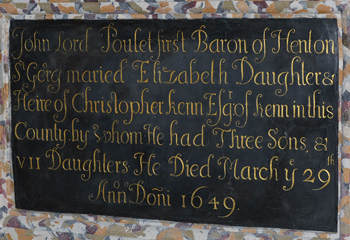
 |

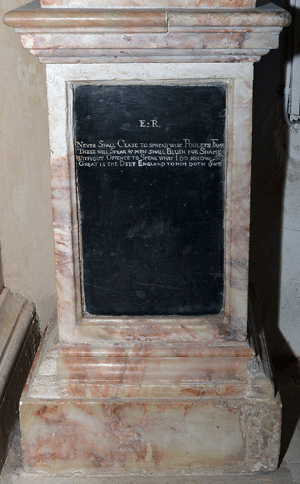 |
|
Above Left: The north aspect of the monument of Sir Anthony Poulett (1600) & Catherine (1601); a photograph of the south aspect, taken from the chancel, is reproduced above. It will be noticed that the tomb is mainly under the arch between the chancel and the chapel and that originally there was just a curtain separating the two parts of the church, so that the bold and insolent could climb through the arch, over the effigies, through the curtain into the chapel; this can no longer be done as a glass or plastic screen has replaced the curtain although now the chapel can at last be seen. Above Right: Exposed section of flooring and three inscriptions from the many on the monuments. Top Left states that John Lord Poulet married Elizabeth ...'by whom He had Three Sons & VII Daughters'. This refers to the 1st Baron. Below This the inscription refers to Anne one of the daughters and co-heir of Sir Thomas Brown...'by whom he had two Sons & foure Daughters'. This refers to the 2nd Baron. On the bottom right is an inscription of a message from Elizabeth I, possibly referring to the imprisonment of her cousin, Mary, Queen of Scots. |
| With many thanks to Lynnne Humphries of Humphries and Jones for kindly supplying the photographs of the Poulett chapel and accompanying information, following their restoration of the said chapel. |
| Hunstspill - St Peter Kn & L uner arched recess M - L C14 |
Hutton - St Mary Thomas Payne, Wife & Children 1523 brasses John Payne, Wife & Children 1496 brasses |
Ilminster - St Mary Sir Wm Wadham 1452 & Wife TC with brasses Nicholas Wadham 1618 & Wife TC with brasses Humphrey Walrond 1580 standing wall monument |
| Ilton - St Peter L alabaster c.1475 Nicholas Wadham 1508 brass |
Kenn - St Paul Sir Christopher Kenn 1593 Elizabethan type |
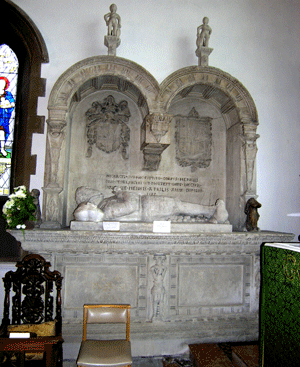 |
Keynsham St John the Baptist |
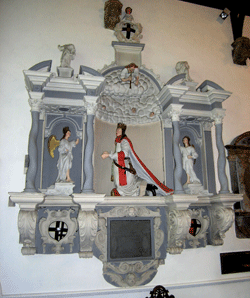 |
||||
 |
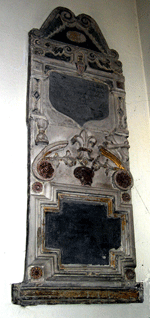 |
|||||
| Sir Henry Bridges (1587) | Thomas Bridges No date visible |
Andrew Chocke (1653) | Sir Thomas Bridges (1666) | |||
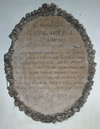 |
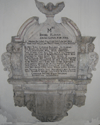 |
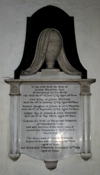 |
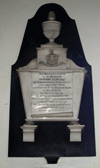 |
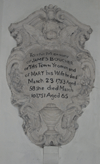 |
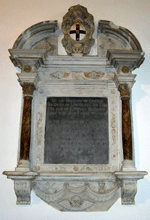 |
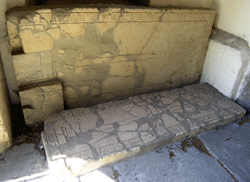 |
| Margarita Simpson (1792) | Joan Fowler (n/d) | James Whippie (1787) and family to 1819 | Edward Lynee (1819) By King of Bath | James Bouchier (1751) | George Bridges (1677) | Incised slabs with inscriptions and crosses |
 |
Kingsdon - All Saints |
| I believe the church is normally open but a
key holder lives nearby. Park somewhere is the village which may
be slightly difficult If you visit and use the village
shop they may give you permission to park in their car park. The
church was difficult to find: it is west of the main (but
yellow) road that runs north-south west of the village itself;
so do not enter the village to the east to find it. O/S Ref: ST 516 262 |
 |
| Kinght. Late 13th century. Now on widow sill. |
| Kingston Saint Mary - St Mary | ||
| This is the village Pevsner refers to simply as Kington. The church is indeed dedicated to St Mary and contains a late 14th century tomb chest. Near Taunton |
 |
Kingstone - St John the Evangelist and All Saints |
 |
| Kingstone is near Ilminster. Park outside
the church on rural road, space rather limited. Church open. Note: Pevsner refers to Kingstone Church as dedicated to St Mary; it is not, but rather as above. These Kings.... churches caused much confusion until we returned to check! O/S Ref: ST 379 137 |
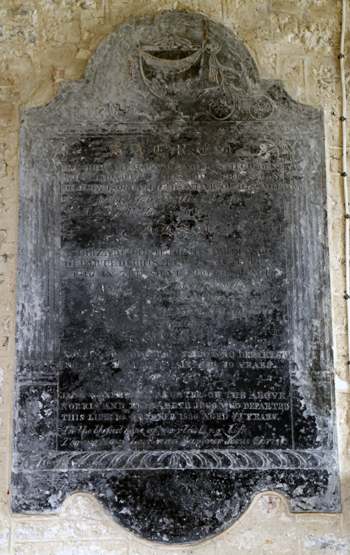 |
Left: Only
partly illegible. Norris Jego (1806). His wife,
Elizabeth (1816). Also a son (illegible) who
died at 19; and a daughter, Jane (1838)
|
||||||||||||||
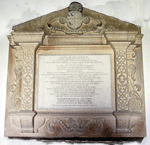 John Francis Cunning (date not legible) |
Langridge - St
Mary Magdelen |
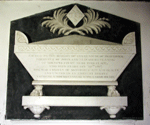 Ann Cunning (1871) |
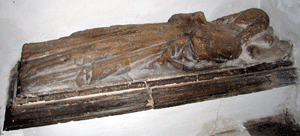 |
||
| Lady early 14th century The brass to Elizabeth Walsche (1441) has been stolen 2009 |
| Langford Budville - St Peter W Barry Wade 1806 by Th King of Bath |
 |
Limington - St Mary |
 |
| Park outside on the road. The church is normally open O/S Ref: ST 542 223 |
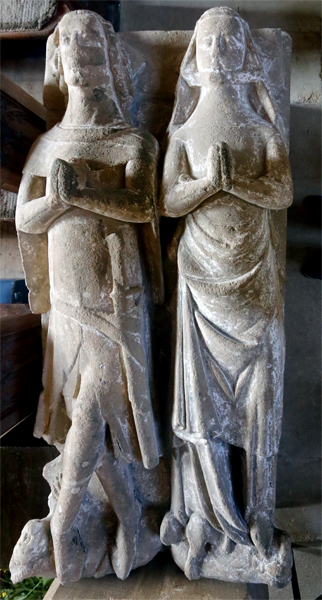 |
 |
 Above and below left: Male and female civilian effigies c. 1300. Note the man's crossed legs although he does not appear to be wearing armour. Both the effigies and the slab are carved from a single block. Said to be Matilda (sister of Sir Richard Gyvernay) and her husband, Henry Power Below right: Fragments of coffin lids with foliated crosses. |
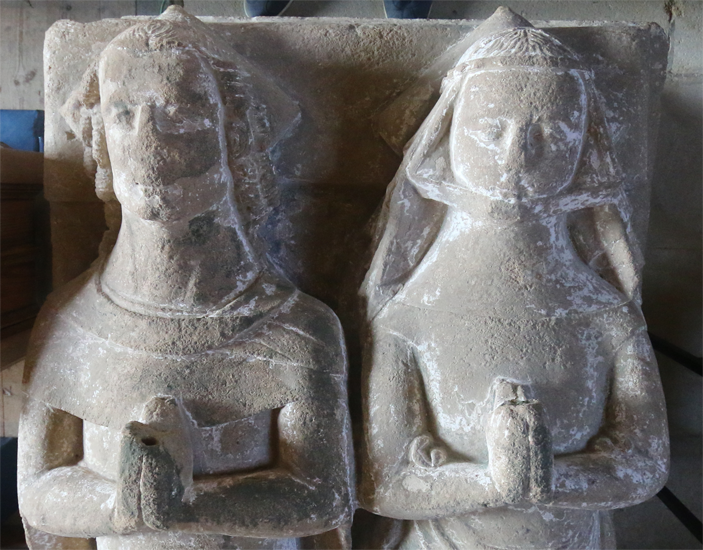 |
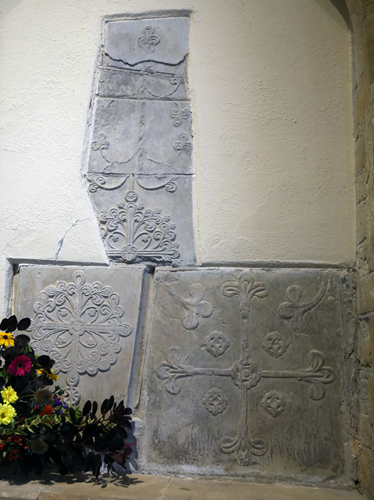 |
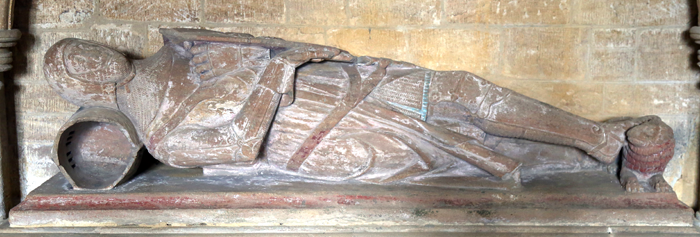 |
|
| Above and below: Knight under arch, unusually facing the observer. Said to be Sir Richard Gyvernay, the founder of the chantry chapel. c. 1330 | |
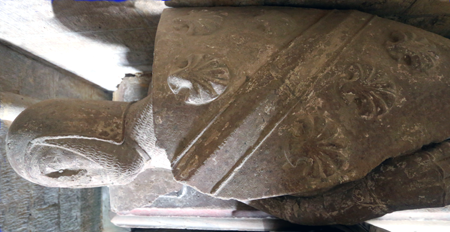 |
 |
 Above and right bottom: Lady c. 1330 Right top shows knight and lady in present position |
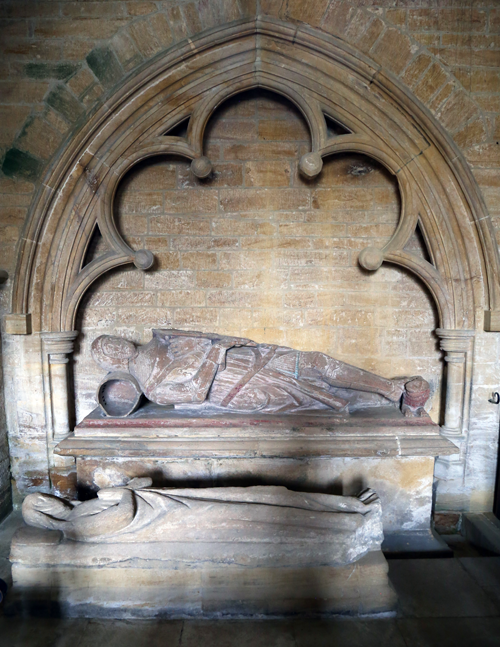 |
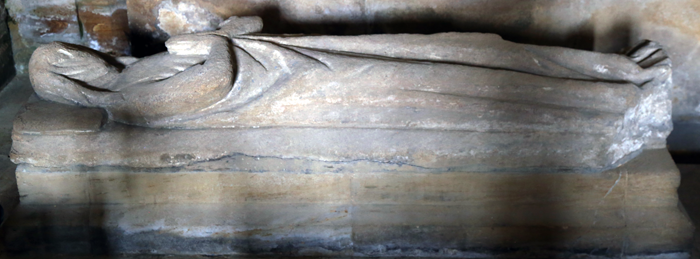 |
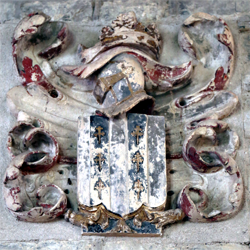 |
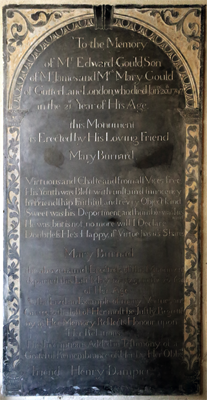 |
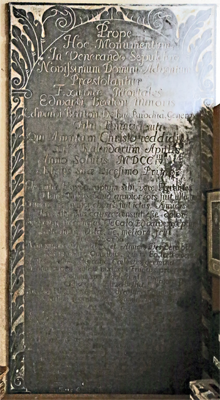 |
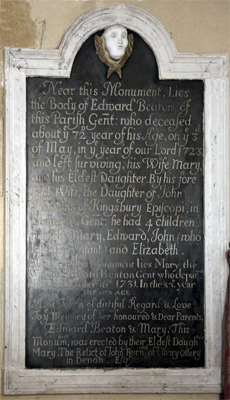 |
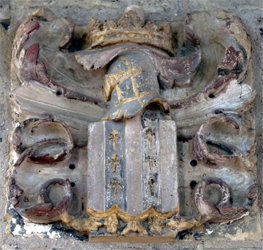 |
| Centre left: Edward Gould (1747) who 'died in the 21st Year of His Age..'this Monument is Erected by His Loving Friend Mary Burnard...' Mary Burnard (1751) ... 'the above named Erectreſs of the Monument departed this Life...11 in the 70th Year of her Age.' Centre: Edward Beaton Morris (173/4) Latin text. Centre right: Edward Beaton ... 'who deceaʃed about ye 73 d Year of his Age...' 1723 His wife, Mary (1731) ...'85th year of HER AGE' | ||||
| Wall Brass |
| Douglsd
Belcher Binney MA (1911) Rector 1836-1911. 'During the
period the organ was erected' |
|
|
| Limington - St Mary Coffins lids with foliated crosses Kn (x-legs) & L c. 1330 Kn (x-legs) c. 1330 L c. 1330 |
Low Ham Sir Edward Hext 1623 & Wife 1633 Recumbent effigies Sir Ralph Stawell 1689 standing wall monuments |
Luccombe - St Mary TC e 16C Wm Harris 1615 Brass |
| Marksbury - St Peter 3 C17 Tabs Tab by W Brewer 1782-1836 |
Marson Bigott - St Leonard Louisa Boyle 1825 by Westmacott |
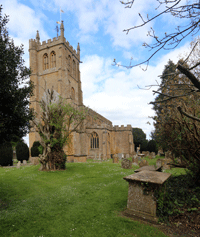 |
Martock - All Saints |
 |
| Church open during normal hours. Park in
road in village outside the church - watch for yellow lines O/S Ref: ST 319 256 |
 |
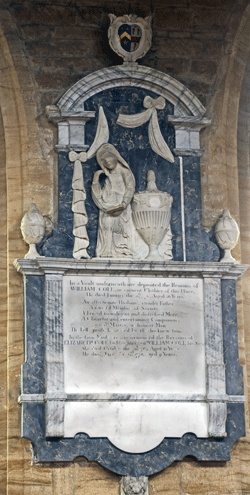 |
 |
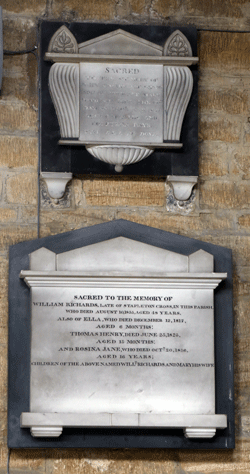 |
 |
|
| Well worn early 14th century lady (S wall recess) | |||||
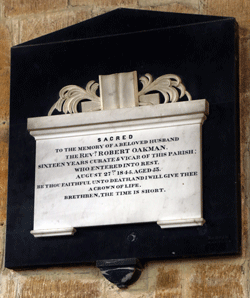 |
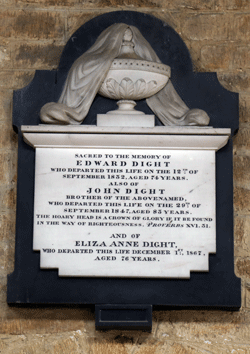 |
||||
| Rev Robert Oakman (1845) 16 years curate and vicar here |
Edward Dight (1832), his brother John Dight (1847). Eliza Anne Dight (1867) | William Cole (illegible) 'eminent Clothier of this place' His daughter Elizabeth (1769 @ 21) & son William (1770 @ 9) | Harriot Leighton (1782) Erected by her son Rev Francis Leighton | Top: John Edward Wood (1885
@ 6m) Bottom: William Richards (1835) & his children: Ella (1817 @ 6m), Thomas Henry (1825 @ 13m) & Rosina Jane (1836 @ 16) |
John Wood (1766) clerk, his brothers James (1773) & Thomas (1779), both of whom died unmarried. A 3rd brother George (1788) & his daughter Mary Bicknell Wood (1788) & his widow Sarah Wood (1829) |
 |
 |
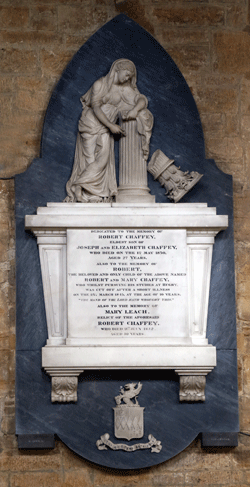 |
 |
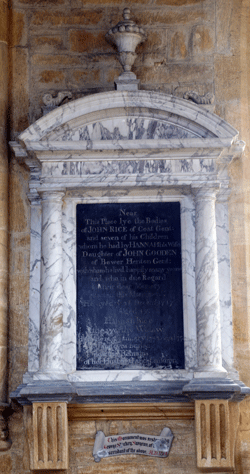 |
| Rev Henry Bennett (1835) and his wife Mary (1833) | Edward Ball
(1814) & Hannah (Rice)(1804) and their children: Hannah (1787), Edward (1771), John (1774), Sarah (1793), Margaret (1780 'in infancy'), William (1826), Susannah Stuckey (1835), Grace (1835), Ann Hamlyn (1840), Mary Drewe (1850) & Betty Slade (1851) |
Robert Chaffey (1837) & his
son Robert (1845) & his wife Mary
(Leach) (1852) |
John Goodden (1718) his
relict Mary (1762). Their eldest son
John (1722) and second daughter Mary (1722) Also Joseph (1731) & Mary Culliford (1725) |
Joseph (1747) & Hannah (1782) Rice and their 7 children |
| Middle Chinnock - St Margaret Priest C14 upper half, under a porch seat |
Midsomer Norton - St John the
Baptist John Smith 1829 by Chapman of Frome |
Milborne Port - St John the
Evangelist L c.1290 Sir W Medlycott 1835 Tab by H Hopper |
| Milton Clevedon - St James Priest c.1328 Sussanah Strangeways 1718 wall monument |
Milverton - St Michael Catherine Spurway signed P Macdowell |
Minehead - St Micheal Lady c.1440 Brass Priest E 14C |
| Monksilver - All Saints TC no effigy, no further info |
|
|
Montacute - St Catherine |
|
| Church open during normal hours. Park in the village O/S Ref: ST 497 169 |
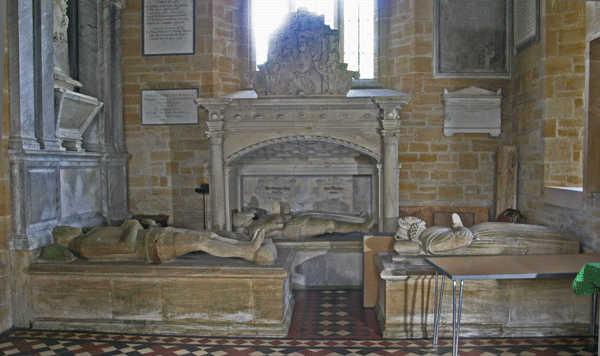 |
| All the monuments are in the North Transept |
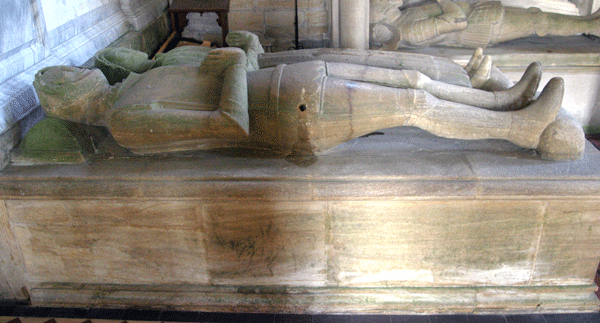 |
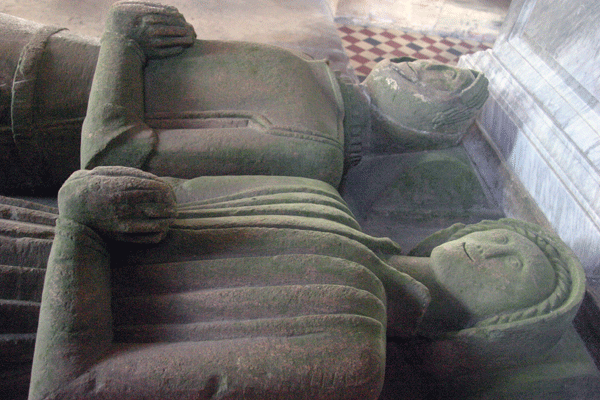 |
| David Phelips (1485) & Wife | |
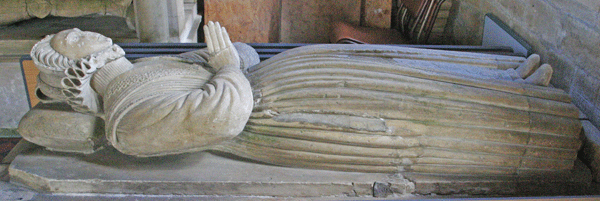 |
| Bridget Phelips (1608) |
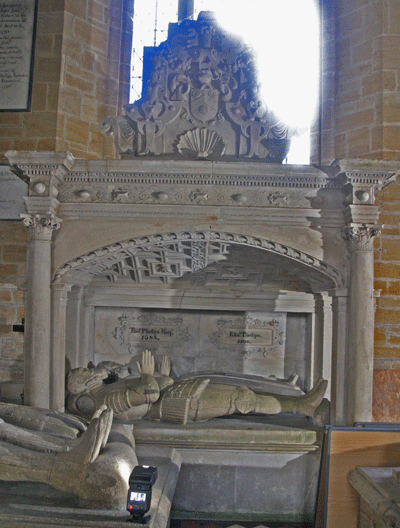 Above & Centre Column: Thomas Phelips (1558) & Elizabeth (1598) |
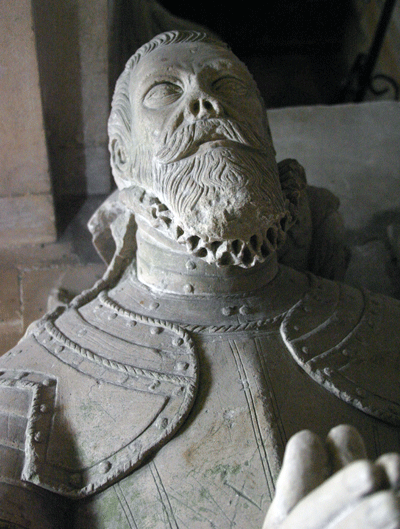 |
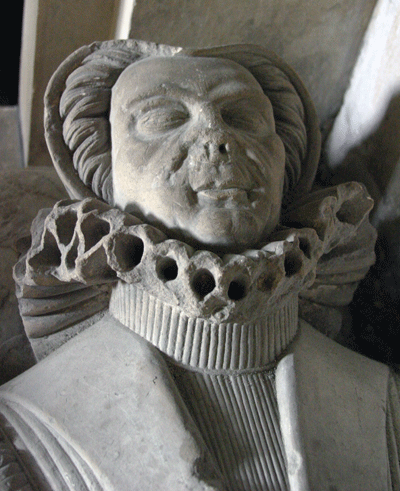 |
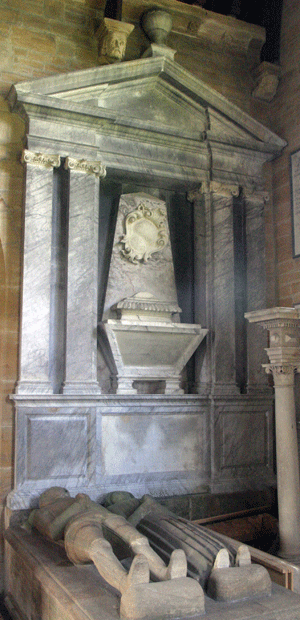 Above: Edward Phelips (1690) The effigies of David Phelips and his Wife can be seen in the foreground |
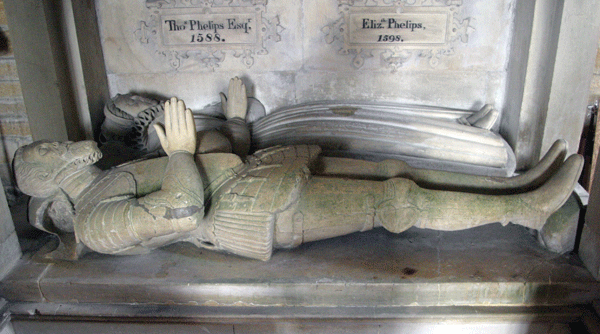 |
|||
| Moorlynch - St Mary |
I did not write to this church but as we were in the area we attempted to anyway. In the village there is an easily missed sign to the church on your right. Take this drive up to the large church/church hall car park. There are some disused toilets in a separate block: you will be glad they are! The gate to the porch and the main entrance was propped up on wooden blocks and there was a do not open sign. The other door was locked. There is reported to be a lady of c. 1375 in the church. |
| Mudford - St Mary Wm Whitby (1617) & Wife Brass |



